[Editor’s Note: Army Mad Scientist hits another milestone with today’s 400th post, featuring an insightful guest submission by Kate Kilgore — the first in a series of posts addressing what the on-going conflict in Ukraine can tell us about the Operational Environment (OE) and the changing character of warfare. Today’s post explores three sign posts emerging from this conflict that are broadening our understanding of the OE: the advent of a digital levée en masse, battlefield transparency, and questions concerning the public or private nature of war. What can the U.S. Army learn from these sign posts to successfully compete with and deter our adversaries, and when necessary, fight and win decisively against them in future conflicts? Read on!]
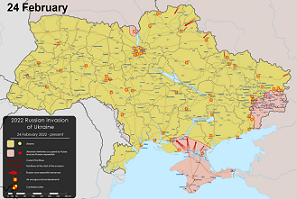
Russia’s invasion of Ukraine on 24 February 2022 sparked intense international discussion about conducting and analyzing conflict. Some signposts to the future include the advent of a digital levée en masse, a highly transparent battlefield, and questions concerning the public or private nature of war. The ongoing conflict has seen individuals from both within the conflict zone and half a world away becoming involved and engaged virtually via the internet. This, in conjunction with advances in geo-sensing and image sharing in the private sector, facilitates actionable intelligence for both military and auxiliary forces and individual citizens. In addition, Ukraine’s efforts in the information domain have led to the first truly public war, where intimate details regarding the battlefield are transparent to the international community. While this creates opportunities for flexible response and an expanded information base, the implications of allowing private citizens access to this battlefield, or even inviting them to join in the conflict via the information domain, creates new nuances for the OE and the changing character of warfare.
Digital Levée en Masse and the Quest for Information Advantage
Digital levée en masse blurs the line between decentralized digital activism and state-sponsored hacking. We are seeing a trend of non-state involvement in the information sphere of conflicts with actors who are oftentimes not formally affiliated with the belligerents.
The term “levée en masse” originated during the French Revolutionary wars at the end of the Eighteenth Century, referring to the conscription process that generated a massive citizen force with a strong national identity to overwhelm opponents in both numbers and resolve. The digital levée en masse, however, is a contemporary phenomenon, largely made up of  non-state actors who harness and motivate vast numbers of online users to impact the fight for information advantage. Though the present digital levée en masse has rallied in support of Ukraine, it is important to consider how this virtual phenomenon could yield negative outcomes [from the U.S. perspective] in the future. Private actors are not bound by international rules and norms during a conflict, and have already been seen to engage in efforts and operations that a law-abiding country and its military would be prohibited from doing. This also highlights the fact that outdated international laws governing conflict do not address whether the online actions by civilians abridge their protected noncombatant status.
non-state actors who harness and motivate vast numbers of online users to impact the fight for information advantage. Though the present digital levée en masse has rallied in support of Ukraine, it is important to consider how this virtual phenomenon could yield negative outcomes [from the U.S. perspective] in the future. Private actors are not bound by international rules and norms during a conflict, and have already been seen to engage in efforts and operations that a law-abiding country and its military would be prohibited from doing. This also highlights the fact that outdated international laws governing conflict do not address whether the online actions by civilians abridge their protected noncombatant status.
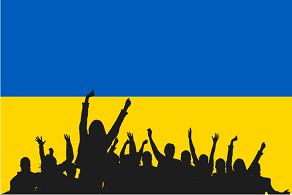 The Ukrainian government sponsored the creation of an “IT Army,” consisting of more than 300,000 individuals from all over the world pushing pro-Ukrainian messaging to Russians via geo-targeted ads and malware. Ukraine also set up a Russian-language Telegram page where citizens in Ukraine could post photos and identifying information of killed or captured Russian soldiers. In an initiative called Ishchi Svoikh (Look For Your Own), the Ukrainian Interior Ministry directed relatives of Russian soldiers to these online platforms where they can search through photos and videos for their family members. The initiative appears aimed in part at undermining morale and support for the war in Russia. This effort has been met with Russian censorship, and has generated international discussion about whether this page violates the Geneva Convention’s stipulation that governments must protect prisoners of war from “insults and public curiosity.” Other initiatives that are not formally sponsored by a state government range from professional programmers in Poland and Norway who have organized efforts to email and text Russian citizens about the conflict, to efforts by the hacking group Anonymous to steal and leak Russian government and corporate information. Regardless, individuals with altruistic goals are exhibiting a willingness to take potentially illegal action and assume significant risks to help Ukraine’s fight against Russia.
The Ukrainian government sponsored the creation of an “IT Army,” consisting of more than 300,000 individuals from all over the world pushing pro-Ukrainian messaging to Russians via geo-targeted ads and malware. Ukraine also set up a Russian-language Telegram page where citizens in Ukraine could post photos and identifying information of killed or captured Russian soldiers. In an initiative called Ishchi Svoikh (Look For Your Own), the Ukrainian Interior Ministry directed relatives of Russian soldiers to these online platforms where they can search through photos and videos for their family members. The initiative appears aimed in part at undermining morale and support for the war in Russia. This effort has been met with Russian censorship, and has generated international discussion about whether this page violates the Geneva Convention’s stipulation that governments must protect prisoners of war from “insults and public curiosity.” Other initiatives that are not formally sponsored by a state government range from professional programmers in Poland and Norway who have organized efforts to email and text Russian citizens about the conflict, to efforts by the hacking group Anonymous to steal and leak Russian government and corporate information. Regardless, individuals with altruistic goals are exhibiting a willingness to take potentially illegal action and assume significant risks to help Ukraine’s fight against Russia.
The Transparent Battlefield — Nowhere to Run, Nowhere to Hide
As Russia’s war in Ukraine wears on, the role of technology is creating a modern battlefield where there is nowhere to run and nowhere to hide. Not only does technology facilitate militaries gathering information from civilian sources and infrastructures, but it also has facilitated targeting based on advanced imaging.
Ukraine’s quick and competent integration of videos and photos posted to social media or provided by commercial imaging enterprises (e.g., MAXAR’s satellite imagery-rich situation reports) have helped produce a highly transparent battlefield. Both the Ukrainian military and the world have an unprecedented degree of access to the battlefield, presaging future conflicts  where every unit’s or even individual soldier’s actions and movements may be detected and broadcast. Ukraine has used social media and satellites to its advantage by crowdsourcing reports of Russian troop movements. Indeed, Russia has begun jamming cellular networks along its forces’ axes of advance to mask tactical movements, highlighting the effect battlefield transparency has had in Ukraine. The modern battlefield has become so transparent that more than 32 Russian Combined Arms Army, Separate Brigade, and Battalion Tactical Group command posts have been detected, targeted, and destroyed by Ukrainian military strikes. It is important to recognize both the advantages and threats posed by this unprecedented degree of visibility that the U.S. military and its adversaries alike will be subject to in future conflicts.
where every unit’s or even individual soldier’s actions and movements may be detected and broadcast. Ukraine has used social media and satellites to its advantage by crowdsourcing reports of Russian troop movements. Indeed, Russia has begun jamming cellular networks along its forces’ axes of advance to mask tactical movements, highlighting the effect battlefield transparency has had in Ukraine. The modern battlefield has become so transparent that more than 32 Russian Combined Arms Army, Separate Brigade, and Battalion Tactical Group command posts have been detected, targeted, and destroyed by Ukrainian military strikes. It is important to recognize both the advantages and threats posed by this unprecedented degree of visibility that the U.S. military and its adversaries alike will be subject to in future conflicts.
Ukraine has incorporated photos and videos of Russian military forces’ movements and conduct posted on social media into its intelligence gathering 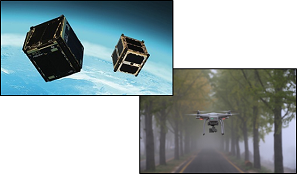 and targeting operations, supported by information provided by civilian-owned satellites and drones. This allows for greater flexibility and adaptability, but it also creates a potentially overwhelming pool of data to be vetted. Over-reliance on intelligence provided by the public may also increase the potential for mistakes or allow the enemy to flood collections with mis-information. Ukraine may be uniquely willing to assume that risk to maintain its sovereignty in the face of invasion. International investigators are also using social media and facial recognition software to investigate alleged Russian war crimes in Ukraine, and reports with the faces and names of accused Russian soldiers have recently been published. Despite its use against Russian soldiers, this trend may bolster the international expectation that intimate details of all parties in future conflicts will be quickly and publicly available, thus increasing the level of scrutiny of all actors. Ukraine’s recent reports about Russia declaring war on SpaceX Starlink satellites, which provided the Ukrainian military and government with continued communications and internet connectivity throughout the conflict and recently repelled a Russian hacking attempt, further establishes that international law insufficiently addresses the status of civilians and private infrastructure in modern conflict.
and targeting operations, supported by information provided by civilian-owned satellites and drones. This allows for greater flexibility and adaptability, but it also creates a potentially overwhelming pool of data to be vetted. Over-reliance on intelligence provided by the public may also increase the potential for mistakes or allow the enemy to flood collections with mis-information. Ukraine may be uniquely willing to assume that risk to maintain its sovereignty in the face of invasion. International investigators are also using social media and facial recognition software to investigate alleged Russian war crimes in Ukraine, and reports with the faces and names of accused Russian soldiers have recently been published. Despite its use against Russian soldiers, this trend may bolster the international expectation that intimate details of all parties in future conflicts will be quickly and publicly available, thus increasing the level of scrutiny of all actors. Ukraine’s recent reports about Russia declaring war on SpaceX Starlink satellites, which provided the Ukrainian military and government with continued communications and internet connectivity throughout the conflict and recently repelled a Russian hacking attempt, further establishes that international law insufficiently addresses the status of civilians and private infrastructure in modern conflict.
Narrative Warfare — Information Operations, Domestic and Abroad
Narratives coming from both Russia and Ukraine are being used in an attempt to influence the information environment both inside and outside of their borders. Does the advantage lie in open communication with the global community to win international support, or is it better to keep the scope of an information campaign limited for greater domestic control?
While gaining information advantage is important in determining success in the wider OE, the emergence of diametrically opposed information spheres raises concerns about what it really means to compete in the information domain. Ukraine’s use of social media to garner international support has helped shape the West’s position, while Russia has relied on 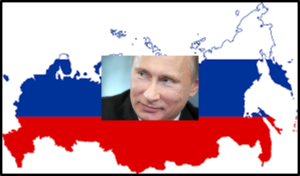 solidifying domestic support by crafting historic and emotional narratives and largely limited its international efforts to existing allies (Iran), non-aligned nations (India, Sri Lanka, and South Africa), and areas with large ethnic Russian populations. The implications of these two diverging “truths” signals that future adversaries may isolate themselves from the rest of the world. A dual information domain means that the U.S. will have to redefine information advantage and determine whether this means simultaneously working to win in the international public domain while attempting to crack an adversary’s private information control.
solidifying domestic support by crafting historic and emotional narratives and largely limited its international efforts to existing allies (Iran), non-aligned nations (India, Sri Lanka, and South Africa), and areas with large ethnic Russian populations. The implications of these two diverging “truths” signals that future adversaries may isolate themselves from the rest of the world. A dual information domain means that the U.S. will have to redefine information advantage and determine whether this means simultaneously working to win in the international public domain while attempting to crack an adversary’s private information control.
Ukraine’s credibility among much of the international community is largely due to its willingness to publicize firsthand accounts of Russia’s invasion over all forms of media. Ukraine’s torrent of success stories and unflinching documentation of Russian misconduct have enabled it to establish trust in its narrative and gain widespread sympathy in countries that value freedom of information. Ukraine’s near-constant information operations addressing the Russian invasion motivated many countries to provide extensive aid, and mobilized the digital levée en masse. In contrast, Russia has effectively focused its information campaign domestically, with limited international appeals catered toward established allies,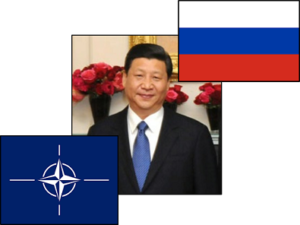 the ethnic Russian diaspora, and some developing nations. China has publicly echoed Russian talking points claiming U.S. and NATO threats to Russian security forced its invasion of Ukraine, but large-scale Russian efforts to compete with Ukraine’s dominance in the global information space have been largely unseen. Russia is not a society built on freedom of information, and remnants of Soviet-era censorship and state violence have established a general reluctance to dissent against state narratives. Coupled with threats of 15 years in prison for promoting narratives counter to the Russian government’s position on Ukraine, Russia’s approach to influence operations has been primarily focused on establishing and sustaining sizeable domestic support for its “special military operation.”
the ethnic Russian diaspora, and some developing nations. China has publicly echoed Russian talking points claiming U.S. and NATO threats to Russian security forced its invasion of Ukraine, but large-scale Russian efforts to compete with Ukraine’s dominance in the global information space have been largely unseen. Russia is not a society built on freedom of information, and remnants of Soviet-era censorship and state violence have established a general reluctance to dissent against state narratives. Coupled with threats of 15 years in prison for promoting narratives counter to the Russian government’s position on Ukraine, Russia’s approach to influence operations has been primarily focused on establishing and sustaining sizeable domestic support for its “special military operation.”
Russia-Ukraine Conflict: Questions for the U.S. Army
The Russia-Ukraine conflict has generated a host of important questions regarding the opportunities and challenges posed by future conflicts that will be transparent, globally connected, and the subject of influence operations.  Ukraine has set a precedent where gaining international and public support will likely depend on a military’s willingness to show candor by engaging in an open and transparent battlefield, but is it possible to contain and manage a conflict in an open, online domain where militaries and non-state participants exist in the same space? Ukraine has paved the way for engaging civilian support and actions to influence conflicts through digital participation, but how far can civilian actors go and still be protected as noncombatants per the
Ukraine has set a precedent where gaining international and public support will likely depend on a military’s willingness to show candor by engaging in an open and transparent battlefield, but is it possible to contain and manage a conflict in an open, online domain where militaries and non-state participants exist in the same space? Ukraine has paved the way for engaging civilian support and actions to influence conflicts through digital participation, but how far can civilian actors go and still be protected as noncombatants per the  Geneva Conventions? Answering this may prove challenging for the U.S. Army as it tries to navigate an ambiguous, uncertain battlefield where the lines between combatant and non-combatant are blurred. Can choosing to use the flexibility offered by crowdsourcing intelligence information from civilians and private infrastructure negate their protected status? Nations with little interest in adhering to international law may ignore or leverage their civilians’ digital actions against protected U.S. affiliated individuals and infrastructure. How will the U.S. approach its own citizens who take such actions against an adversary? Can Ukraine’s success in publicizing the minutiae of a conflict to undermine the legitimacy of Russia’s mis-information campaigns be duplicated by the U.S. in future conflicts? Would such an approach mitigate or exacerbate the ability for an adversary to create distrust in the U.S. military by publishing identities and alleging misconduct by Service members on social media? Russia’s attempts to solidify its State-controlled domestic information sphere may lead to future bad actors taking a similar approach in order to isolate its citizens and maintain domestic support. How can the U.S. Army prepare to compete for information advantage in both an international information domain that prizes freedom of information and in a near-peer’s State-controlled and highly censored information space simultaneously? As the OE continues to develop toward a more highly connected, transparent, and public future, the Army has the opportunity to learn from these sign posts and prepare to successfully compete, deter, and when necessary, fight and win decisively in future conflicts.
Geneva Conventions? Answering this may prove challenging for the U.S. Army as it tries to navigate an ambiguous, uncertain battlefield where the lines between combatant and non-combatant are blurred. Can choosing to use the flexibility offered by crowdsourcing intelligence information from civilians and private infrastructure negate their protected status? Nations with little interest in adhering to international law may ignore or leverage their civilians’ digital actions against protected U.S. affiliated individuals and infrastructure. How will the U.S. approach its own citizens who take such actions against an adversary? Can Ukraine’s success in publicizing the minutiae of a conflict to undermine the legitimacy of Russia’s mis-information campaigns be duplicated by the U.S. in future conflicts? Would such an approach mitigate or exacerbate the ability for an adversary to create distrust in the U.S. military by publishing identities and alleging misconduct by Service members on social media? Russia’s attempts to solidify its State-controlled domestic information sphere may lead to future bad actors taking a similar approach in order to isolate its citizens and maintain domestic support. How can the U.S. Army prepare to compete for information advantage in both an international information domain that prizes freedom of information and in a near-peer’s State-controlled and highly censored information space simultaneously? As the OE continues to develop toward a more highly connected, transparent, and public future, the Army has the opportunity to learn from these sign posts and prepare to successfully compete, deter, and when necessary, fight and win decisively in future conflicts.
If you enjoyed this post, check out the following related content:
What the Joint Force can learn from K-Pop “Stans” by Matthew Ader; LET’S TWEET, GRANDMA – Weaponizing the Social to Create Information Security, by CDR Sean M. Sullivan; Information Advantage Contribution to Operational Success, by CW4 Charles Davis; and China and Russia: Achieving Decision Dominance and Information Advantage by Ian Sullivan, along with the comprehensive paper from which it was excerpted
Integrated Sensors: The Critical Element in Future Complex Environment Warfare, by Dr. Richard Nabors; Nowhere to Hide: Information Exploitation and Sanitization; War Laid Bare, by Matthew Ader; Top Attack: Lessons Learned from the Second Nagorno-Karabakh War, and associated podcast; and The Future of Ground Warfare, and associated podcast
War in Ukraine: The Urban Fight is Happening Now, and associated podcast; Through Soldiers’ Eyes: The Future of Ground Combat, and associated podcast; Alternet: What Happens When the Internet is No Longer Trusted? by proclaimed Mad Scientist Lt Col Jennifer “JJ” Snow; and Splinternets, by proclaimed Mad Scientist Howard R. Simkin;
Sub-threshold Maneuver and the Flanking of U.S. National Security, by Dr. Russell Glenn; Global Entanglement and Multi-Reality Warfare and associated podcast; The Exploitation of our Biases through Improved Technology by proclaimed Mad Scientist Raechel Melling; A House Divided: Microtargeting and the next Great American Threat by 1LT Carlin Keally; The Erosion of National Will – Implications for the Future Strategist by Dr. Nick Marsella; Weaponized Information: What We’ve Learned So Far…; and Insights from the Mad Scientist Weaponized Information Series of Virtual Events
About the Author: Kate Kilgore is a TRADOC G-2 Intern and recent graduate of Indiana University, where she studied Law and Public Policy, Comparative International Politics, Soviet History, and Russian and Eastern European Studies. Kate has been greatly influenced by her father’s Army career, and she grew up all over the United States and in Germany, which influenced her passion for Eastern European history. Much of her undergraduate research focused on analyzing the path dependence and modern social implications of Soviet laws and in the former Eastern Bloc, with a focus on Hungary. When she’s not reading about culture and politics of the former Warsaw Pact States, she enjoys baking and antiquing.
Disclaimer: The views expressed in this blog post do not necessarily reflect those of the U.S. Department of Defense, Department of the Army, Army Futures Command (AFC), or Training and Doctrine Command (TRADOC).

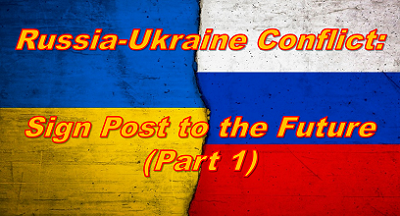


Kate,
Thanks for such a great article. I especially found your explanation of the “digital levée en masse” helpful in understanding the new considerations that the Ukraine conflict introduces to future warfare.
I’m also considering how we have often thought of the public as being a key recipient of the narrative. However, in Ukraine’s model of non-state, civilian-engaged open communication — reflecting and commenting on the war as it unfolds — its public is now less the recipient of the narrative than a contributing “generator” of it.
Another possibly new dynamic is that the outcome of the broader battle today is largely driven by the “non-kinetics”, so to speak; i.e., the competing narratives, influence, economics, etc., wherein the kinetic, on-the-ground, conventional developments are only one crucial (and costly) subset. This is arguably the opposite from wars of the past, where the outcome of a war depended largely on the kinetic, conventional, on-the-ground victory, wherein the non-kinetic narrative/influence activities were merely a supporting factor or subset.
Again, thanks for your thought-provoking article.